Kitchen Guides
Organise Your Messy Kitchen Cupboards & Drawers in 8 Steps
First, empty your cupboards and lose what you don’t use. Next, follow these simple steps to keep your kitchen organised
Getting your kitchen storage organised and in good working order is very satisfying, but it can be hard to know where to begin, especially if you’ve been using your kitchen for a while and have adapted to its quirks. To help, here’s an eight-step guide with the best ways to organise your kitchen cabinets by grouping items by type, storing them near where you use them and getting rid of what you’re not using.
2. Decide what to keep and what to part with
The contents of your kitchen cupboards, like many storage spaces around the house, are likely filled with items that you use often, but they’re also likely filled with even more items that you use rarely, if ever.
Give yourself permission to let go of those unused items. Donate or give away what you can, recycling or throwing out anything you can’t, such as expired pantry items.
Check out these neat and tidy kitchen cupboards and pantries
The contents of your kitchen cupboards, like many storage spaces around the house, are likely filled with items that you use often, but they’re also likely filled with even more items that you use rarely, if ever.
Give yourself permission to let go of those unused items. Donate or give away what you can, recycling or throwing out anything you can’t, such as expired pantry items.
Check out these neat and tidy kitchen cupboards and pantries
3. Clean cupboards and drawers
Now that your cupboards and drawers are empty, spend some time giving them a spring clean before you fill them again. Wash all surfaces thoroughly with gentle soap and water then allow them to dry completely before restocking.
Tip: For an extra level of polish, and to make future cleaning easier, you can also add shelf or drawer liners, or replace old ones.
Now that your cupboards and drawers are empty, spend some time giving them a spring clean before you fill them again. Wash all surfaces thoroughly with gentle soap and water then allow them to dry completely before restocking.
Tip: For an extra level of polish, and to make future cleaning easier, you can also add shelf or drawer liners, or replace old ones.
4. Group items by use
“Think of your kitchen as functional zones: Washing, prepping, cooking on the stove and baking,” Duncan says.
Group the items or tools you use for each of those tasks together for efficiency. In the pantry, this means organising food types by category: Cooking, baking, snacks and breakfast, or whichever grouping technique works best for your lifestyle.
“Think of your kitchen as functional zones: Washing, prepping, cooking on the stove and baking,” Duncan says.
Group the items or tools you use for each of those tasks together for efficiency. In the pantry, this means organising food types by category: Cooking, baking, snacks and breakfast, or whichever grouping technique works best for your lifestyle.
5. Place items near where you’ll use them
Once you’ve grouped your items, plan to place them in cupboards or drawers close to where their function is performed.
In the panty, place the foods that you use most often in the easiest-to-reach places. Tori Cohen, an organising and decluttering professional in New York, US, adds a possible exception to this rule: “If you think you eat too many snacks, put those up high so you don’t see them as often, and it’s more of a to-do to get them,” she says.
Tip: While you’re working out what to store in each cupboard or drawer, Duncan suggests placing temporary labels made of blue painters tape on the cupboard or drawer where each group is going. This will help you get a sense of how your storage plan is shaping up and simplify making adjustments as you go.
Once you’ve grouped your items, plan to place them in cupboards or drawers close to where their function is performed.
In the panty, place the foods that you use most often in the easiest-to-reach places. Tori Cohen, an organising and decluttering professional in New York, US, adds a possible exception to this rule: “If you think you eat too many snacks, put those up high so you don’t see them as often, and it’s more of a to-do to get them,” she says.
Tip: While you’re working out what to store in each cupboard or drawer, Duncan suggests placing temporary labels made of blue painters tape on the cupboard or drawer where each group is going. This will help you get a sense of how your storage plan is shaping up and simplify making adjustments as you go.
6. Consider new kitchen cupboard organisers
Once you have determined where you’d like to store everything, look for places where your kitchen cabinets and drawers could benefit from additional organisation and storage tools. Here are some ideas to consider:
Once you have determined where you’d like to store everything, look for places where your kitchen cabinets and drawers could benefit from additional organisation and storage tools. Here are some ideas to consider:
- Roll-out shelves: Corner cabinets and extra-deep lower cupboards benefit from roll-out shelves, either custom-made or purchased from a kitchen or storage shop. The shelves will allow you to easily see the cabinet’s entire contents – even what’s at the very back.
Baskets and storage containers: Storage containers and open-topped baskets can be a great way to group items, especially food.See these stylish containers for a clutter-free home
- Drawer pegboard: Pegboard systems, which feature adjustable screw-in dowels to keep plates in place, can be purchased for existing drawers.
Tip: Depending on your drawer’s construction, the bottom may need to be reinforced for heavy dishes.
- Cabinet risers and drop-downs: Freestanding cabinet trays can double your storage by adding another shelf for organisation without losing any accessibility.
- Drawer dividers for kitchen utensils: Standard drawer tray inserts work well for cutlery, but kitchen utensils can be a little more challenging to corral; they’re not uniform in size and not everyone has the same kind. “My best suggestion is drawer dividers, and not a tray,” Cohen says. “That way you can create the sizes of spaces you need.”
Look for adjustable dividers, which can be expanded to fit your kitchen drawers. As you will have done with the rest of your organising, group kitchen utensils by type before placing them in drawers.
- Racks for pots and pans: Consider storing pots and pans with a rack or system, which can be added into your existing cupboards. “That way, none of the pans need to sit inside one another, and they’re easily accessible,” Cohen says.
See these amazing plate rack designs
7. Put everything away
Put the contents of your kitchen cabinets and drawers in their new homes, prioritising what you plan to use more frequently in the most accessible spots, and placing rarely used items, such as seasonal platters, out of the way. “This is what the top shelves are for,” Cohen says.
Put the contents of your kitchen cabinets and drawers in their new homes, prioritising what you plan to use more frequently in the most accessible spots, and placing rarely used items, such as seasonal platters, out of the way. “This is what the top shelves are for,” Cohen says.
8. Maintain organised cabinets
Keen to take your organisation system up a notch? To maintain your thoroughly ordered kitchen and to help you or your guests quickly identify what is stored where, consider putting a label on the inside of each cabinet indicating its contents.
“When you’re running around the kitchen trying to figure out where your roasting pan is, all you should need to do is read these labels,” Cohen says.
Keen to take your organisation system up a notch? To maintain your thoroughly ordered kitchen and to help you or your guests quickly identify what is stored where, consider putting a label on the inside of each cabinet indicating its contents.
“When you’re running around the kitchen trying to figure out where your roasting pan is, all you should need to do is read these labels,” Cohen says.
Other considerations for organising kitchen cupboards and drawers
Take a look at these kitchen drawer designs
- Cupboards versus drawers: “Shelves are great for taller and odd-shaped items, since shelves tend to be adjustable,” Duncan says. Drawers can be useful for everyday items, including kitchen tools and cutlery. Deep drawers can also be used for baking supplies and pots and pans.
Take a look at these kitchen drawer designs
- Glass-front cupboards and open shelves: Glass-front cupboards and open shelves provide an opportunity to create an attractive kitchen display. Store your most attractive plates, cups and pots where they can be seen, and try not to stuff the cabinets too full. Decorative baskets or containers can also sit nicely on open shelves, with items stored inside.
Tip: If you’d rather not display your kitchenware, peel-and-stick window film can render transparent cupboard doors translucent.
- Corner cabinets: In areas where items always get pushed to the back and are hard to reach, try installing turntables, which make it easier to see and access your cupboard’s entire contents.
Alternatively, Cohen suggests using these blind corners for rarely used items, like party platters, or for storing bulk items, such as paper towel that you don’t necessarily need to see in order to grab.
Considerations for small kitchens
Duncan and Cohen shared their extra tips for keeping a small kitchen organised:
12 Tips, Ideas & Gadgets to Ace Kitchen Organisation
Tell us:
What fail-proof suggestions can you add to keep your kitchen organised? Share your tips in the Comments below.
Duncan and Cohen shared their extra tips for keeping a small kitchen organised:
- Buy only what you really need.
- Declutter frequently.
- Purchase multiuse accessories rather than specialty tools that can only perform one function.
- Designate a separate cupboard for overflow items and sort through these regularly.
- Consider a portable food preparation cart with storage underneath if your kitchen’s on the small side.
12 Tips, Ideas & Gadgets to Ace Kitchen Organisation
Tell us:
What fail-proof suggestions can you add to keep your kitchen organised? Share your tips in the Comments below.




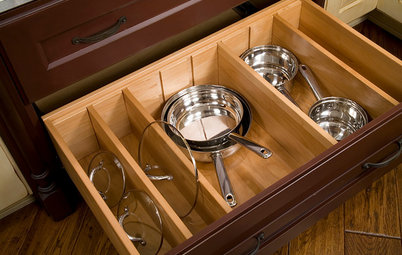
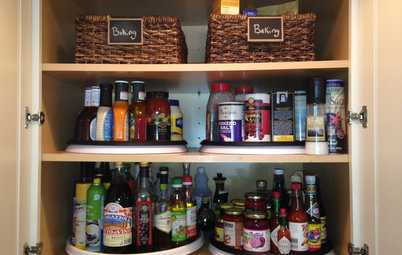
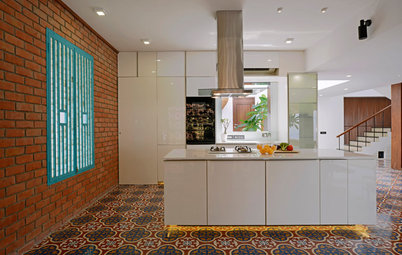
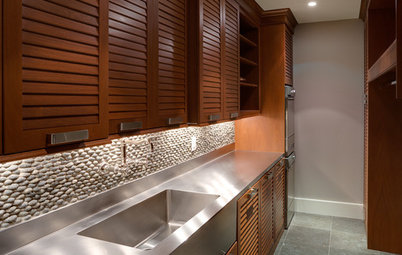
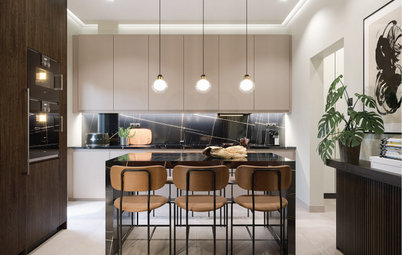
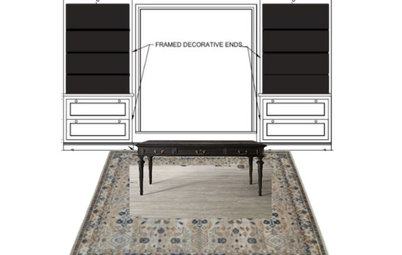
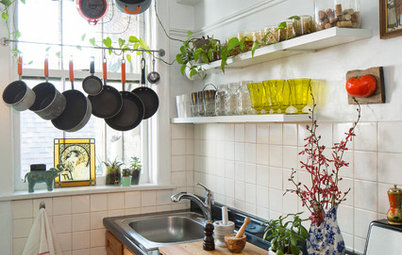
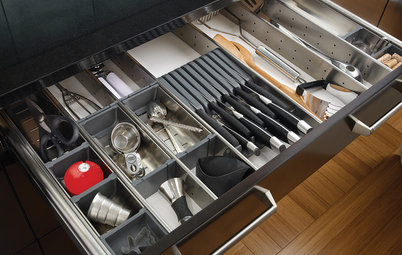
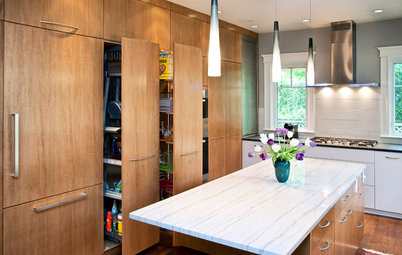

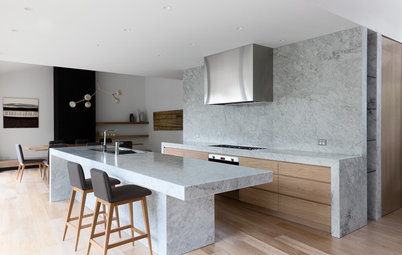
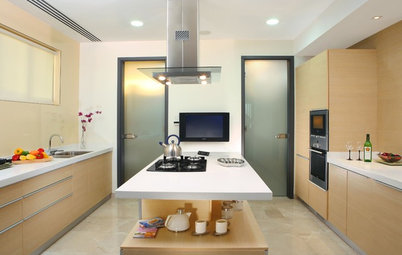
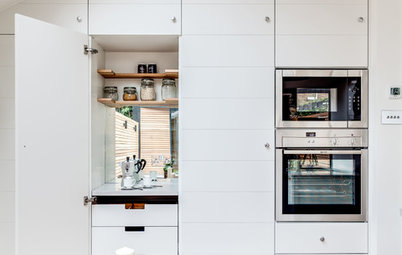
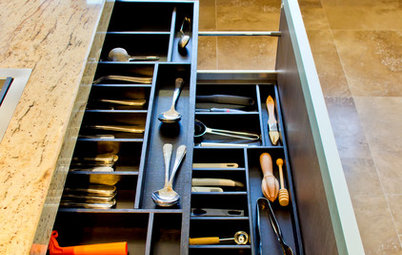
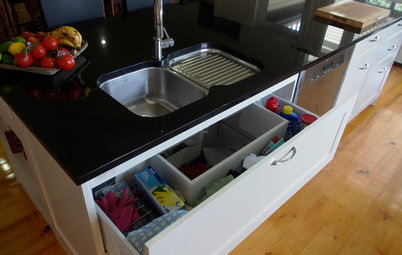
First, take everything out of your cabinets and place the contents on a table or your benchtop.
“Physically handling each item forces you to make decisions about keeping, donating or discarding,” says Karen Duncan, a professional organiser based in Florida, US.